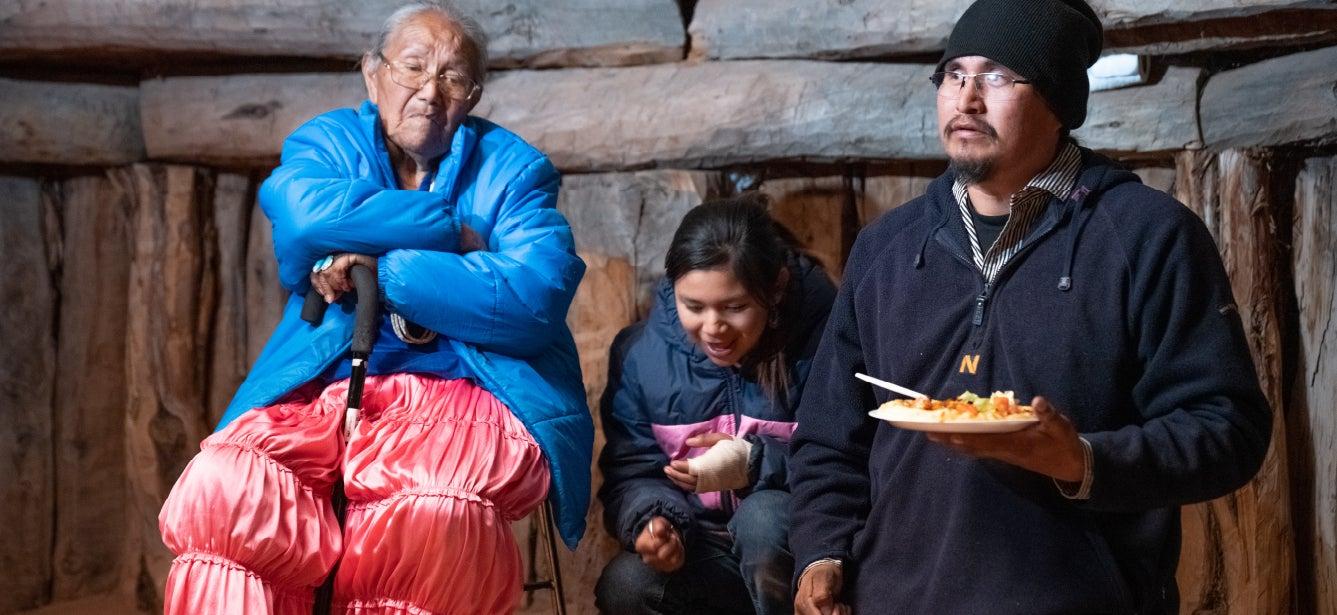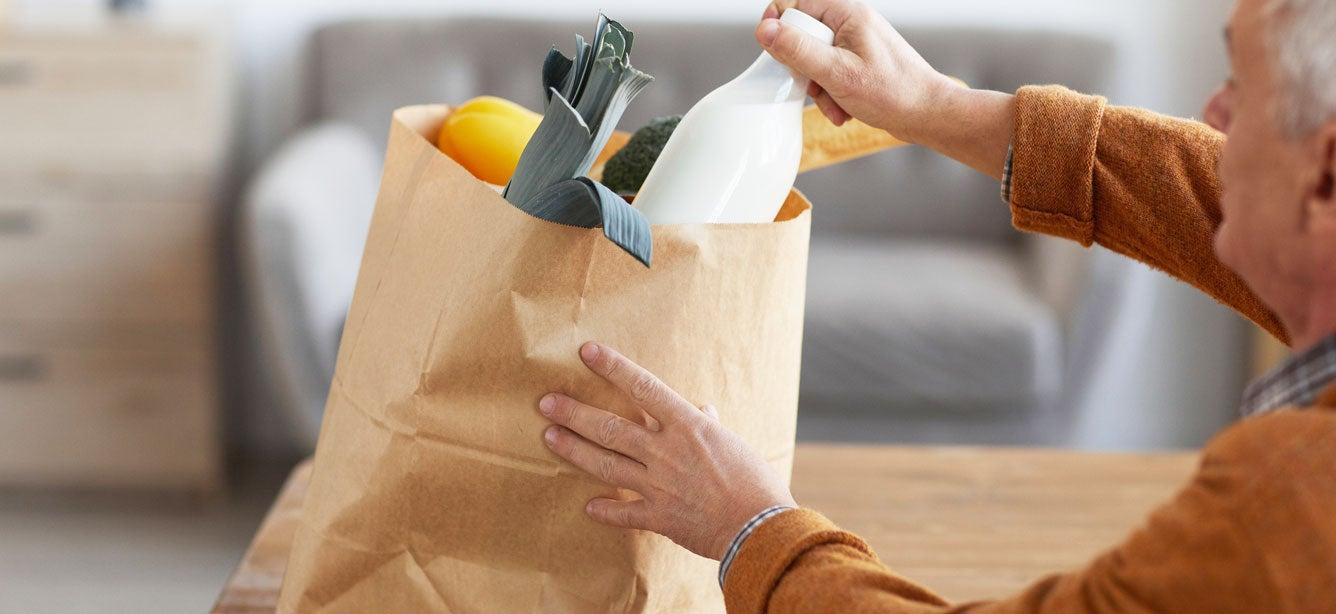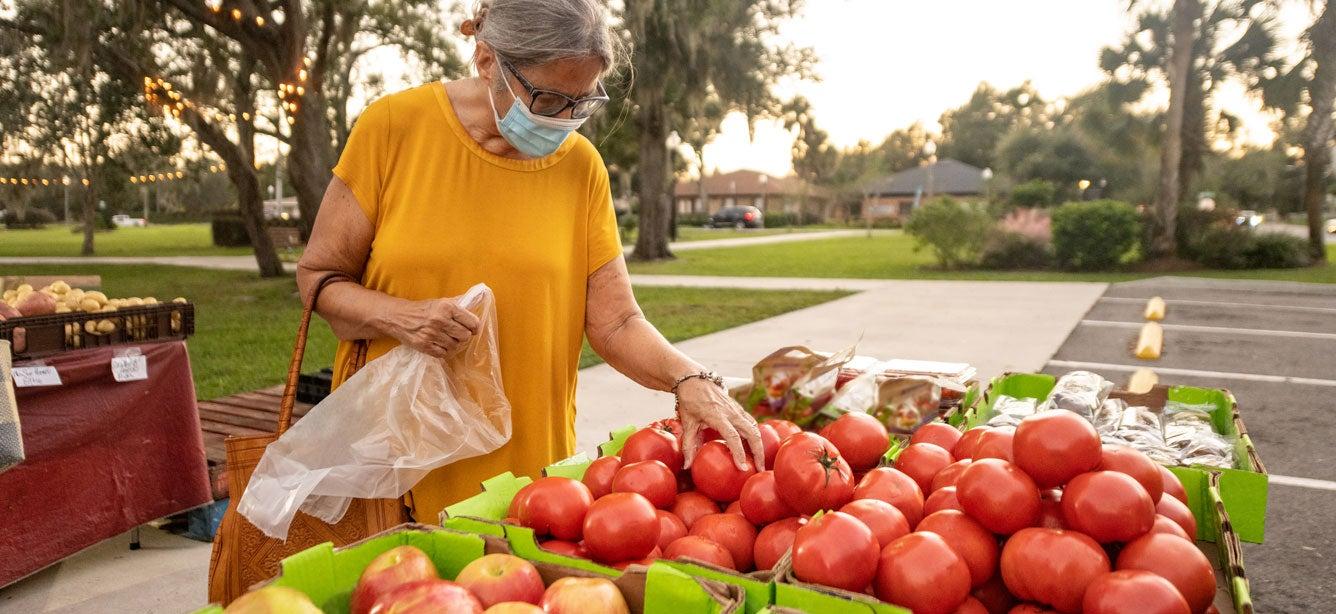
Related Topics
There are approximately 6.79 million Indigenous people in the U.S. This population is disproportionately affected by food access issues, with one in four Native Americans experiencing food insecurity compared to 1 in 9 Americans overall.1 A University of California, Berkeley study found that 92% of Native American households within the study region did not have consistent access to healthy, culturally appropriate foods in sufficient quantity.2
What food assistance programs are available for Native Americans?
There are two primary anti-hunger programs serving Native Americans. One is the Supplemental Nutrition Assistance Program (SNAP). As the largest food assistance program in the U.S., SNAP provides monthly supplemental funds that help eligible older adults stretch their grocery budget further. But SNAP is only effective if Native American households have easy access to authorized grocery retailers. Due to low population densities and the remote nature of American Indian and Alaska Native Tribal areas, larger food retailers don’t typically have a substantial presence in these communities.
The Food Distribution Program on Indian Reservations (FDPIR) provides an alternative way for Native Americans to obtain food assistance when using SNAP isn’t practical.
What is the Food Distribution Program on Indian Reservations?
Established under the Food Stamp Act of 1977, the federally funded FDPIR provides U.S. Department of Agriculture (USDA) foods to:
- Alaska Native households in Alaska Native Tribal communities.
- American Indian and non-Indian households living on a reservation.
- Households residing in an approved area that include at least one member of a federally recognized Tribe.
FDPIR applicants also have to meet certain income eligibility requirements. While most households must be recertified for benefits every 12 months, those with older adults and individuals who have a disability may be certified for up to 24 months. FDPIR beneficiaries cannot participate in SNAP at the same time.
How does FDPIR work?
Under the program, the USDA purchases and ships domestically sourced foods to Indian Tribal Organizations (ITOs) and state agencies. These agencies, which receive funding from the USDA to administer FDPIR, use local warehouses, Tribal stores, and other sites to house and distribute food packages directly to recipients. They’re also responsible for determining the eligibility of applicants and providing nutrition education.
FDPIR packages contain foods from a specific list and include items such as:
- Fresh fruits and vegetables
- Beef, pork, fish, and poultry
- Dry and evaporated milk
- Cheese
- Canned soups and sauces
- Flour, cornmeal, and bakery mixes
- Rice and other grains
- Pasta
- Beans (dried and canned)
There are currently an estimated 276 tribes—out of the federally recognized 574 tribes—that receive benefits under FDPIR. In fiscal year 2020, the program served 75,000 Native American adults and children each month.
What are some challenges of the Food Distribution Program on Indian Reservations?
While FDPIR has helped many older Native American adults put healthy food on their table, certain challenges have been brought to light. These include:
- Lack of availability of culturally appropriate foods: Tribal organizations that help administer FDPIR have limited authority regarding the types of foods provided to their communities. Instead, the products that make up FDPIR packages are largely determined by the federal government. As a result, Native Americans enrolled in the program don’t always have broad access to traditional, Indigenous foods like blue corn meal, catfish, salmon, walleye, wild rice, and bison.
- Inability to purchase FDPIR food from Tribal farmers: Another issue is that FDPIR foods come directly from USDA, which procures these foods from American producers. This creates a barrier to food sovereignty by directing demand away from Native food producers.
Fortunately, there are efforts underway to overcome these obstacles. One of these is the Self-Determination Demonstration Project, introduced in 2021, which awarded $3.5 million to several Tribal nations. Through this funding, Tribal communities have more flexibility in tailoring their FDPIR food packages to meet their people's traditional dietary preferences. Additionally, the project lets Tribal nations source food directly from local vendors of their choosing rather than USDA.
In a recent press release issued by USDA, Stacy Dean, deputy under secretary for food, nutrition, and consumer services, said this about the initiative: "USDA is fully committed to supporting the restoration of indigenous food, to empower indigenous agricultural economies, and to improve indigenous health through traditional foods."
According to the Intertribal Agriculture Council, the Self-Determination Demonstration Project is "an important acknowledgement of Tribal sovereignty that opens the door to food purchasing decisions that allow for more traditional, Tribally grown, local, and regionally produced foods."
North American Traditional Indigenous Food Systems (NāTIFS) is another organization working to facilitate Indigenous food access, improve health, and drive economic prosperity in Native communities. Founded by Chef Sean Sherman, NāTIFS is working with USDA to increase education on how to cook healthy meals using Indigenous ingredients and foods available through the FDPIR.
How do I apply for FDPIR?
Many older adults in Native American communities use FDPIR as an alternative to SNAP. To find out if you qualify for FDPIR and to apply for benefits, contact the ITO or state agency that oversees the program in your local area. Visit the USDA website for nutrition assistance program contact information in your state—or call the USDA National Hunger Hotline at 1-866-348-6479.
Sources
1. Feeding America. Hunger + Health. November is Native American Heritage Month. Nov. 10, 2020. Found on the internet at https://hungerandhealth.feedingamerica.org/2020/11/november-native-american-heritage-month/
2. Berkeley Rausser College of Natural Resources. Restoring Access to Native foods can reduce food insecurity. June 19, 2019. Found on the internet at https://nature.berkeley.edu/news/2019/06/restoring-access-native-foods-can-reduce-food-insecurity




